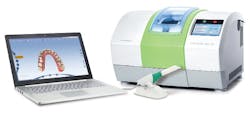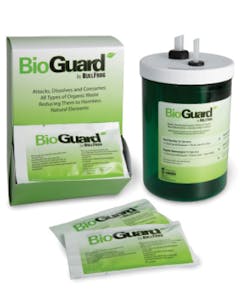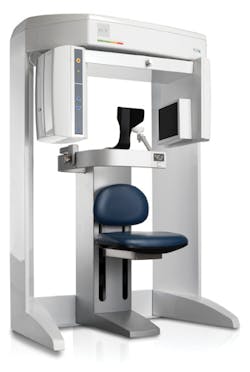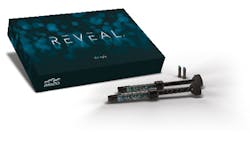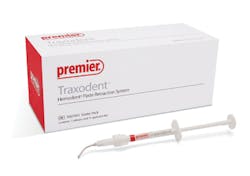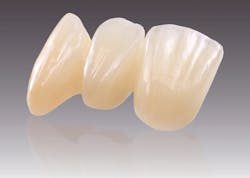Products to see at the 2018 Chicago midwinter meeting
Meeting dates: February 22–24
Interviews by
Joshua Austin, DDS, MAGD
Chris Salierno, DDS
Stacey L. Simmons, DDS
This year marks the 153rd annual gathering of the Chicago Midwinter Meeting. The meeting is known for its debut of product innovations, and this year is no exception. In this feature, we teamed up with six companies to bring you previews of new technologies on the way, as well as updates on favorite products that have been enhanced in the past year.
After the show is over, look for our extended coverage of the meeting online. We’ll be publishing videos on these and other products we discover in Chicago.
Product spotlight by Stacey L. Simmons, DDS
Planmeca Fit Open CAD/CAM System
Company Planmeca
Midwinter booth No. 1020
If you’re riding the fence regarding digital scanning, you need to read up on the Planmeca Fit Open CAD/CAM System. The latest version has streamlined features with the capacity to assist with crown and bridge, implants, and orthodontics. Key features include single-handed control and easy integration with existing software systems. It is definitely worth checking out in Chicago!
I had the chance to interview Lenny Asuncion about the finer points of the system. Here’s what she had to say.
Interview with Lenny Asuncion
Dentistry continues to incorporate digital technology better each year. How does this system fit in?
Rapidly evolving innovations are improving the way dental care is delivered to patients and creating opportunities for dentists to expand services. Digital CAD/CAM now allows dentists to move beyond the realm of restorative dentistry and into other areas of treatment, such as implantology and orthodontics.
Planmeca offers clinicians the ability to practice dentistry to suit the needs of their practices through open-platform solutions. These solutions fully integrate available technology, as is the case with the Planmeca Fit Open CAD/CAM System.
Planmeca Fit has undergone a facelift since its initial release. It benefits from the improved components of the Planmeca Emerald intraoral scanner, enhancements to Planmeca PlanCAD 6.0 Design Center Software, and the precision of the Planmeca PlanMill 40 S. A cost-efficient milling unit currently in development will improve things even further.
Could you tell me more about image capture?
One of the most impressive aspects of the Planmeca Emerald intraoral scanner is, undoubtedly, its speed. It quickly scans the quadrant and full arch for treatment planning and appliance design. A new ultra-lightweight, ergonomic design provides superior control and unparalleled patient comfort. The autoclavable tips feature built-in usage tracking and an anti-fogging system for continuous scanning. Even clinicians with minimal experience have the ability to capture accurate digital impressions within seconds.
You mentioned a new component debuting in 2018. What other improvements can we expect?
Planmeca PlanCAD 6.0 Design Center Software, scheduled for release in the first quarter of 2018, will further streamline the digital design process. Planmeca PlanCAD 6.0 allows single-handed control within the scanner rather than having to switch between the scanner and laptop. Gyroscope orientation and dual button function detect hand motion and position, allowing the user to manipulate scanner tools and control data density, ICE view, and delete scans from the scanner.
Additional features will enhance simplicity, such as contralateral mirroring. This allows clinicians to balance the smile by replicating dentition on both sides of the mouth for a more esthetic look. Overall, the enhanced software will improve user experience by creating efficiencies in the scanner and designing of the restoration or appliance.
What about high-volume clinics versus solo practitioners?
From high-volume dental clinics with multiple clinicians and locations to single-location solo practices, the Planmeca PlanMill 40 S is a workhorse that can efficiently mill accurate restorations with superior integrity. The dual spindle mill streamlines the user experience through a self-contained onboard computer with a Windows-based touchscreen interface. Equipped with SMART technology software, Planmeca PlanMill 40 S calculates custom milling paths to improve performance and restoration integrity.
Some systems say they are open, but are in fact limited. Where does this one fall?
As with all Planmeca products, all components of the Planmeca Fit are designed on an open technology platform to fully integrate with other systems, allowing for smooth integration. For growing dental practices, the system’s scalability is an appealing quality due to its flexibility to expand to meet the needs of the office. Ultimately, Planmeca Fit is designed with the ability to adapt to clinicians’ practices.
Product spotlight by Chris Salierno, DDS
BioGuard Evacuation System Cleaner
Company Hager Worldwide
midwinter Booth No. 1830
Interview with Patrick Rouillard
Dentists would probably be surprised to see what’s collecting in their evacuation lines. Aside from the gross factor, what are the potential problems we should be most worried about?
The main problem dental offices should be worried about as it relates to buildup in their evacuation lines is reduced suction power. This results in longer procedure times and staff frustration, which reduces efficiency and disrupts workflow—not to mention the frustration it can cause patients who might feel like they’re drowning, for example, during ultrasonic scaling. Plus, more debris in the lines means more gets caught in the vacuum trap. This leads to an unpleasant experience for staff members who clean the trap, both because of the time it takes and the smell. This can sometimes lead to the trap being cleaned with less frequency than necessary.
How does the BioGuard Evacuation System Cleaner work?
BioGuard is an enzymatic biologic that uses bacteria to soften clogging debris, which includes bioburden, prophy paste, and fluoride varnish. The main advantage here is the residual cleaning action the bacteria provides. Unlike enzymatic cleaners that only soften while in direct contact, the BioGuard bacteria continue to work even after the solution passes through the lines. This means it’s working 24/7 to keep lines clear and suction running at max level. Plus, the vacuum trap will have less buildup (and smell) to deal with. Even better, it only needs to be used twice a week, rather than daily, so there’s less maintenance responsibility for staff.
Product spotlight by Joshua Austin, DDS, MAGD
i-CAT FLX V Series
COMPANIES i-CAT, KaVo Kerr Imaging
midwinter LOCATION: KaVo Kerr Pavillion
Interview with Kevin Bradley
Tell me about the i-CAT FLX. What are its new bells and whistles that our readers should know about?
i-CAT recently released its latest offering, the V-Series, which gives dentists flexibility and functionality. The V-Series allows an office to purchase a small field of view machine and then upgrade to larger fields of view without having to purchase a new system. The i-CAT can literally grow with the needs of the practice. We are proud to be the first CBCT system to allow for 3-D upgrades on the same machine.
That’s really impressive. What is the field of view for the smaller version?
The smallest field of view we offer is a 5x8 single-arch shot. Our V8 has this field of view along with an 8x8 dual-arch scan. What also makes the i-CAT V-Series so impressive is that all of our scans are 1:1 single-pass scans. We do not employ double scans that need to be stitched in order to achieve a larger field of view. That’s because we include a full-size sensor on every machine, even the smaller field of view machines. No one else in the industry does this.
I’m assuming that when a doctor decides to upgrade his or her machine, a new sensor is part of that upgrade?
Actually, because we include our full-size sensor on our less expensive, small field of view machines, there is no need to secure a new sensor. We simply open up the sensor for additional fields of view for an upgrade fee.
Cool! Let’s talk about procedures. What type of procedures do you think the smaller sensor i-CAT would open up for a doctor who doesn’t have a CBCT?
The primary uses would be implant placement and endodontics. For implants, a practitioner can clearly see the floor of the sinus or the mental foramen, plus bone height, width, and density. This provides for excellent implant outcomes. From an endodontic perspective, the i-CAT allows the doctor to see the morphology of the canals, along with outstanding accuracy. Plus, there is the ability to see all of the canals, including the MB2 root prior to endodontic procedures.
It’s no wonder that doctors with CBCT talk about their practices in terms of pre-CBCT and post-CBCT, because it really is practice-changing. With such a powerful “mini-CBCT,” what would be some good reasons for doctors to upgrade to the full, all-out version of the i-CAT FLX?
Some of the reasons doctors would upgrade to the mid field of view i-CAT V10 would be to expand vision of the temporal mandibular joints or perhaps the patient’s lower airway. These anatomical landmarks are becoming more and more a part of the discussion as they pertain to effective and comprehensive treatment options. If a doctor wants to image the entire upper and lower airways in a single scan or needs to be able to capture a cephalometric image for orthodontics, then this is where the large field of view comes into play.
You guys have a 3-D–based event coming up, right?
Yes—our 3D Congress will be held in Fort Lauderdale, Florida, in March 2018. One of the more exciting (and new) aspects of this event will be the addition of i-CAT’s corporate partner, KaVo Kerr Imaging, and their suite of products. Not only will our guests be able to touch and feel the impact of i-CAT, but add to that the power of our entire 2-D and 3-D portfolio via KaVo Kerr Imaging, and it will be a unique opportunity. Our roster of speakers this year is stronger and more diverse than ever. It’s going to be a terrific event.
Product spotlight by Chris Salierno, DDS
Reveal HD Bulk
Company Bisco
midwinter Booth No. 4800
Interview with Jeffrey Nickas, DDS
One of the key factors we look for when evaluating a bulk fill is depth of cure. What will Bisco’s Reveal HD Bulk be able to deliver, and can you tell us a little about the chemistry behind it?
Due to its innovative chemistry, Reveal HD Bulk achieves a category-leading 5–6 mm depth of cure. This level of complete curing has allowed me to place my composite restorations in fewer layers than was ever possible with previous materials. Chemically, Reveal HD Bulk has been able to combine this substantial depth of cure along with low shrinkage stress, low volumetric shrinkage (<2.50%), and high flexural strength (>80.00 MPa). These properties ensure that my composite restorations will be strong and long-lasting.
What do you look for in the handling properties of bulk-fill composites, and how does this one measure up?
Regarding handling properties, Reveal HD Bulk is a game changer in the bulk-fill category. I’ve used other bulk-fill composites in the past with varying degrees of success. I feel that many bulk-fill composites tend to be very soft and sticky when placing. My concern with these properties is that I often get “pullback” from the composite when sculpting, even when using modeling resin. This has a propensity to introduce voids into the restoration.
I feel that Reveal HD Bulk provides a solution to this problem, as it has a more optimal viscosity for placement. It is firm when placing but still light to touch. I feel it has better characteristics and is more sculptable and moldable. In a nutshell, it stays where I put it, which is really what I want out of any composite. Reveal HD Bulk accomplishes this very well. I can say that it also polishes quite nicely, giving a more smooth, lifelike appearance in the mouth.
Product spotlight by Stacey L. Simmons, DDS
Traxodent Hemodent Paste Retraction System
Company Premier Dental |
Interview with Jason Goodchild, DMD
There is nothing worse than not being able to obtain a dry working field when restoring a tooth or doing crown and bridge. Sure, we all have our go-to products to eliminate saliva and heme from our working field, but I am always up for change and trying new products. I had the chance to interview Jason Goodchild, DMD, and discuss Traxodent, a paste that contains 15% aluminum chloride. When dispensed into and around the working area, it gives you exactly the isolation you need. I’ve used this product on several occasions and it definitely does not disappoint!
Can you give us an overview of this unique product?
This product is unique in the paste retraction category for its excellent handling, rinseability, and performance. It uses a novel clay formulation that is easily extruded from the capsule or syringe, stays where it’s placed, and is rinsed away easily. After dwelling around the prepared tooth for approximately two minutes and water rinsing, the tissue is dry without fluid or blood. When used with a Retraction Cap (cotton pellet in cylindrical shape), it provides needed tissue retraction.
What are some advantages and disadvantages of the product?
The advantages are: easy handling; it’s supplied in syringes or capsules with a reusable dispenser; clay is just the right viscosity; excellent hemostasis; rinses away easily; and when combined with a Retraction Cap it can help with tissue retraction.
A disadvantage is that the cost is higher than retraction cord. This is offset by the effectiveness of the product in making impression-taking easier, which will reduce impression retakes and crown remakes, which ultimately saves chair time. (Also, it’s less traumatic to surrounding tissues than cord.)
Describe to me how you use it.
It is very easy to use. Both delivery systems are simple and familiar to dentists. There is no learning curve, just place around the prep, bite on a Retraction Cap for two minutes, rinse off, and take the impression.
Anything else dentists should know?
As a final word, this is a superior product in the category. I have an obvious bias, but I believed that it was superior well before I became an employee—when I was a general dentist working in the trenches. I was looking for solutions to tissue management and wanted to achieve good crown and bridge impressions the first time, every time. It just works, and I love the predictability!
Product spotlight by Joshua Austin, DDS, MAGD
IPS e.max ZirCAD
Company Ivoclar Vivadent | |
There are a ton of zironia products on the market. What sets ZirCAD apart from the rest?
Many high translucency zirconia products have been introduced to the market in recent years, but customers have expressed dissatisfaction in the areas of intraoral esthetics and strength. To meet the market demand for an esthetic, high-strength zirconia product, Ivoclar Vivadent introduced IPS e.max ZirCAD. The cornerstone of this product line is IPS e.max ZirCAD Multi, a zirconia product with a medium translucency body and high translucency incisal for great intraoral esthetics. Additionally, its unique medium translucency composition provides up to 50% higher fracture toughness than common translucent zirconia materials.
Can you give us some idea of the strength of this material? What has your testing shown?
Fracture toughness, the ability of a material to resist crack propagation, is becoming an increasingly referenced measurement for comparing the strengths of different ceramic materials. Some of the most popular translucent zirconia products have a fracture toughness that is similar to lithium disilicate (around 2.5 MPa √m). The unique composition of IPS e.max ZirCAD MT provides a fracture toughness of 3.6 MPa √m, which allows for indications such as three-unit posterior bridges with wall thicknesses of only 1.0 mm.
Wow! Three-unit posterior FPDs. That’s cool! Tell our readers a little bit about the shades in which ZirCAD is available.
IPS e.max ZirCAD MT Multi is available in eight shades (one bleach and seven A-D) to allow for minimal staining to any A-D shade, or even just glazing for a shade-accurate result. For cases in which a high degree of customization is desired, IPS e.max ZirCAD MT monochromatic shades are available in the same shade range for detailed characterization or even a slight cutback.



